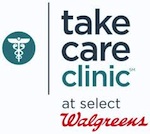Meet Dr. Walgreens. Pharmacy-run ACO Redefines Doctor Marketing Competition
 The mixed-up-world of healthcare delivery in the US has been scrambled again…this time by the corporate/retail sector. Walgreens continues to redefine the mid-level provider landscape by announcing that it will become “the first-ever chain retailer to become a direct provider of primary care services.”
The mixed-up-world of healthcare delivery in the US has been scrambled again…this time by the corporate/retail sector. Walgreens continues to redefine the mid-level provider landscape by announcing that it will become “the first-ever chain retailer to become a direct provider of primary care services.”
Just when you thought you had a fix on the competition, general practices, hospitals and other providers need to revisit their healthcare and doctor marketing strategy…and how they can differentiate themselves from "Dr. Walgreens."
Walgreens pharmacy-run ACO model is an extension of services via their 330 in-store TakeCare Clinics in 18 states. No doubt other retail and storefront clinics—such as Walmart Clinics and CVS Caremark Minute Clinics—are watching.
Walgreens explains the move as an answer to healthcare and doctor shortages, and an increased market demand with 30 million people projected to gain insurance coverage in 2013 through the Affordable Care Act (ACA).
“To help meet the need for greater access to affordable health services and bridge gaps in patient care, while also improving care coordination,” Walgreens announced. New Take Care Clinic services would include “assessment, treatment and management for chronic conditions such as hypertension, diabetes, high cholesterol, asthma and others, as well as additional preventive health services.”
The marketing challenge for general practitioners, family practices and hospital-lead provider facilities is how to clearly differentiate and effectively compete in this rough-and-tumble primary care marketplace. It will not be an easy task, considering some of the obvious marketing strengths the Walgreens and others have on their side of the field. These include:
- Hundreds of easily accessible locations throughout the US
- Wide range of operating days and hours
- Immediate or same-day appointments, including evenings and weekends
- Immediately adjacent pharmacy access
- Generally lower cost than doctor’s office (by 30 to 40 percent, and much lower cost than emergency room care (by 80 percent)
Understandably, the American Academy of Family Physicians (AAFP) was not pleased with Walgreens’ plan. “Care delivered in retail clinics can be a component of patient-centered care,” they said in a policy statement, “but must work in coordination with the patients’ primary care physician to ensure that care is not further fragmented.
“While the AAFP recognizes the demand for the advancement of patient centered-ness in the American health care delivery system, it should not be at the expense of comprehensive coordinated longitudinal care.”
The AAFP statement also pointed to some of the medical practice and doctor marketing advantages. “Furthermore, retail clinics are not the only source of convenient care available for patients today. The overwhelming majority of family physicians offer same-day scheduling in their practice and roughly half of all family physicians have extended office hours for patients to seek care.
“This easy access, combined with the adoption of the principles of patient-centered care, allows family physicians to provide care that is highly convenient while avoiding overall fragmentation of care.”
We’d like to hear your comments regarding this continued shift in the provider landscape. It’s clear that this trend will continue to unfold. National retail chains have significant marketing clout of their own, and the evolution of healthcare delivery represents a highly relevant marketing and competitive challenge.
To start creating your own clout, turn to Healthcare Success and our experienced pharmaceutical SEO team.
Related: See our previous posts on this topic, Medical Practice Marketing: Is Walmart Jumping Into the Primary Care Gap or Not? and Taking Aim at the Competition: A Page from the Retail Playbook for Hospital Marketing and Advertising.









